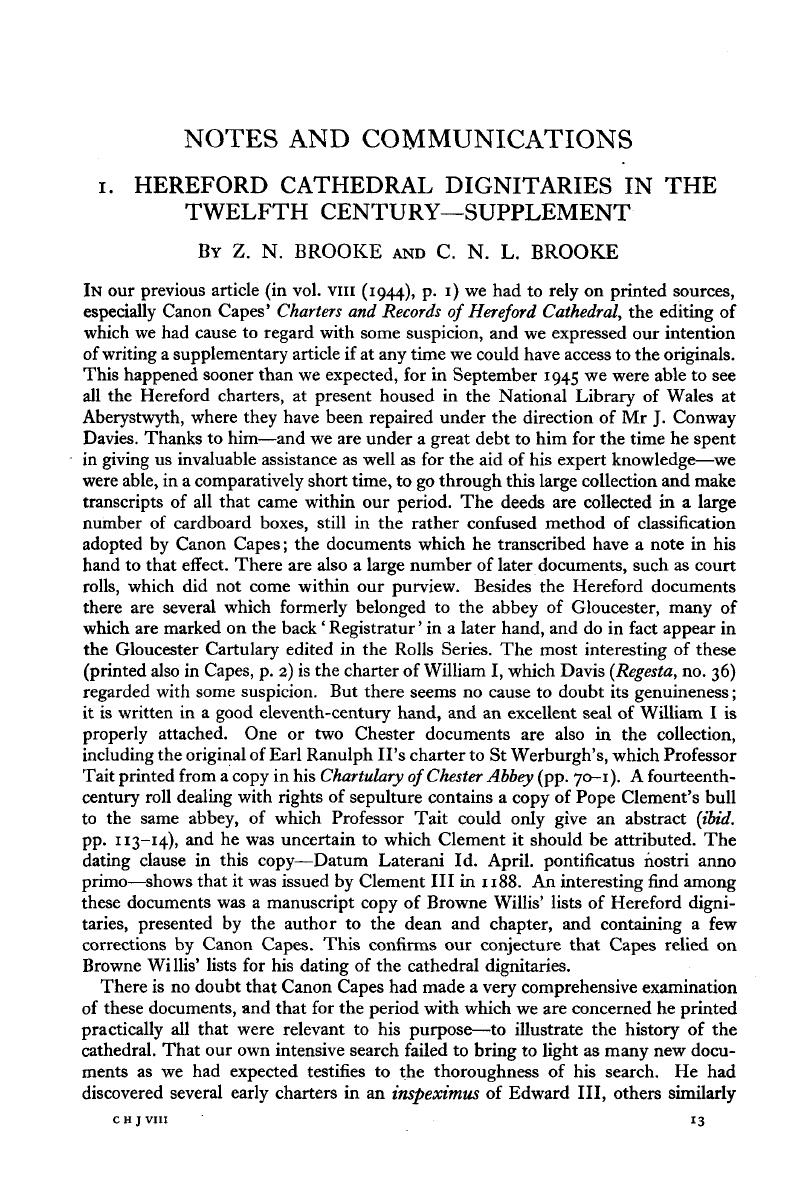Published online by Cambridge University Press: 20 December 2011

1 In the case of Innocent II's bull (p. 6), which he took from bishop Trefnant's register, stating that the bull had not been preserved in the archives, we did find the original. It was in a box containing miscellaneous documents, labelled ‘Vicars Choral’.
2 William de Braose married Bertha, sister of Earl Roger. Roger in this charter describes William de Braose as his socer, which should normally mean ‘father-in-law’, while gener is the regular term for a sister's husband. However, the terms for in-laws were often used rather loosely.
3 This prebend was in Gloucestershire, therefore in the diocese of Worcester.
4 The same mistake misled the editor of The Cartulary of Missenden Abbey (Records Branch of the Buckinghamshire Arch. Soc. vol. II, 1938), who prints a charter (no. 247) witnessed by Richard Barre, archdeacon of Lisieux (for Luxoniensi is obviously a scribal error for Luxoviensi), but takes for granted that Richard Barre was really archdeacon of Ely. This charter was probably issued at much the same time as the Salisbury charter. Another witness is Herbert, archdeacon of Northampton, whose successor, Savaric, was certainly archdeacon in 1179 (Jaffé-Löwenfeld 13446), and probably earlier. Also William of Northall is another witness, and he is not described as archdeacon of Gloucester, which he became in 1177.
5 Anyhow, as this is taken from an inspeximus of Edward III, it is of doubtful value.
6 Nec pacem nec pacem, MS.
7 Sic in MS.